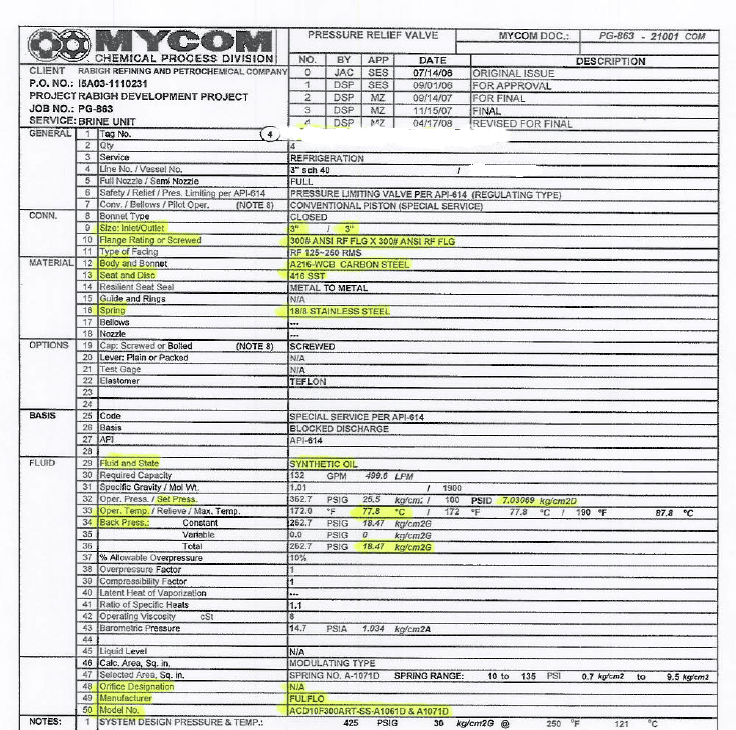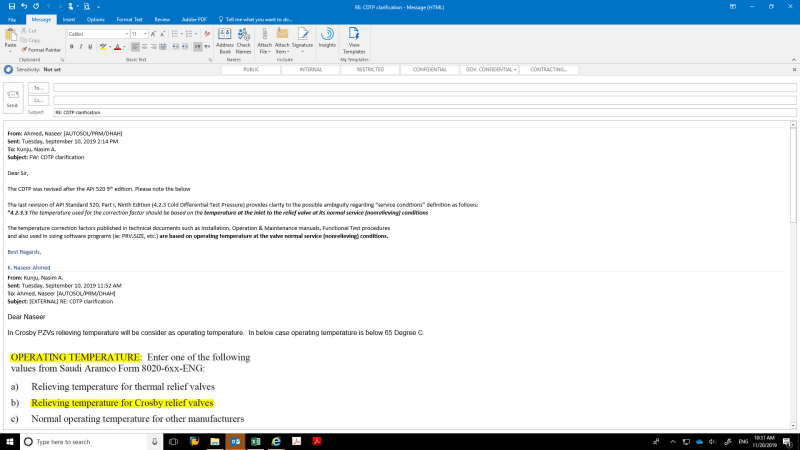Nasim12345
Industrial
Dear Sir
I need your advice to calculate the CDTP(Cold Differential Test Pressure) for the Fulflo valve. Pls refer the attached data sheet.
Set pressure is 7.03 Kg/cm2D (differential pressure)
Constant superimposed back pressure is 18.47 Kg/cm2g
Can you pls advice the CDTP? Is it 7.03 Kg/mc2g?

Cold Differential Test Pressure (CDTP)
The cold differential set or test pressure is the actual pressure at which the valve will open on a test stand. As PZVs are usually set and tested at ambient temperature with no backpressure, the CDTP includes any necessary correction for the actual application, based upon backpressure and / or temperature. Backpressure correction is only needed for Conventional PZVs and it addresses constant backpressure only.
CDTP (Conventional PZV) = (Set Pressure – Constant Superimposed Back Pressure) * Temperature Correction Factor.
CDTP (Bellows or Pilot PZV) = Set Pressure * Temperature Correction Factor.
The Pressure adjustment for temperature is specific to the Manufacturer and PZV Model. Consult the manufacturer for discharge temperatures above 150°F.
Thanks
Nasim
I need your advice to calculate the CDTP(Cold Differential Test Pressure) for the Fulflo valve. Pls refer the attached data sheet.
Set pressure is 7.03 Kg/cm2D (differential pressure)
Constant superimposed back pressure is 18.47 Kg/cm2g
Can you pls advice the CDTP? Is it 7.03 Kg/mc2g?

Cold Differential Test Pressure (CDTP)
The cold differential set or test pressure is the actual pressure at which the valve will open on a test stand. As PZVs are usually set and tested at ambient temperature with no backpressure, the CDTP includes any necessary correction for the actual application, based upon backpressure and / or temperature. Backpressure correction is only needed for Conventional PZVs and it addresses constant backpressure only.
CDTP (Conventional PZV) = (Set Pressure – Constant Superimposed Back Pressure) * Temperature Correction Factor.
CDTP (Bellows or Pilot PZV) = Set Pressure * Temperature Correction Factor.
The Pressure adjustment for temperature is specific to the Manufacturer and PZV Model. Consult the manufacturer for discharge temperatures above 150°F.
Thanks
Nasim



